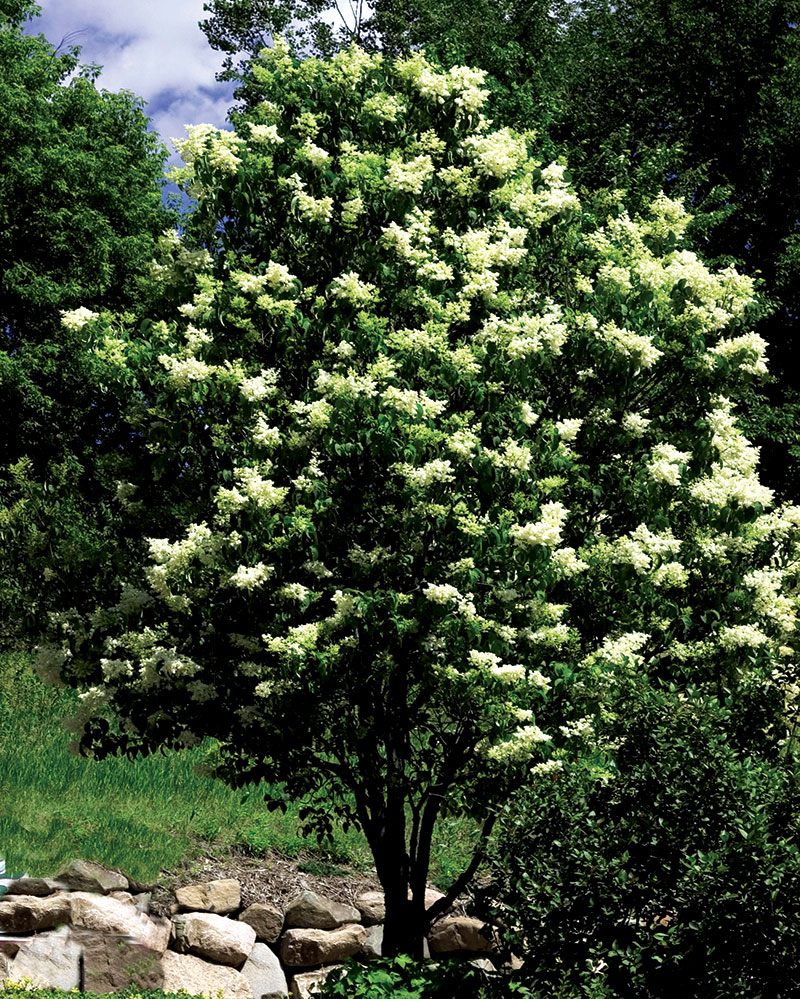
Spring is the most common season for planting trees, but horticultural experts cite another time of year perfect for putting trees in the ground: fall. “Fall planting reduces the stress on new plants,” says Jeff Dinslage, president of Nature Hills Nursery. “Cooler fall temperatures create the perfect growing environment for most trees and shrubs.” We’ll cover the reasons why fall is a great time to plant trees, then cover four trees that are great to plant during these months.
Why Fall Is Great for Planting Trees
You Get a Jump-start on Spring Growth
In the fall, the soil tends to stay warmer than the air temperature, which is great for developing root systems. When the roots start growing again in early spring after the ground thaws, the spring growth will be healthier and more prolific.
There’s Less Transplant Shock
The milder autumn weather gives perennials, shrubs and trees a better chance to acclimate to new surroundings.
You Use Less Water
The lack of high temperatures and high humidity reduces the water lost to evaporation. The shorter days of autumn also cause photosynthesis to slow down. As a result, new plants require less water than if they were planted in the spring or summer.
Cooler Weather Makes for Easier Planting
If hot, sweaty summer weather isn’t for you, the crisp, cool fall air makes for an enjoyable, leisurely experience while planting.
Trees Great for Autumn Planting
Here are four terrific trees that deserve a spot in your landscape.
1. Ivory Silk Lilac Tree

This small tree (Syringa reticulate ‘Ivory Silk’) bears huge, 1-foot-long flower panicles in late June, well after traditional lilac bushes have given up for the season. The creamy-white, monster flower bunches give off a heady, musky scent that will perfume an entire yard. These trees make a great focal point in small yards, and in large yards they can be planted in a row along a fence line to create a showstopping tall hedgerow.
The Ivory Silk Lilac tree blooms more heavily and longer than bush lilac varieties. In the summer, a tree lilac is densely covered in beautiful, deep green leaves—a refreshing sight in the height of summer heat. In the fall and winter, the dark-red bark adds an interesting color to the landscape. A tree lilac can withstand temperatures as low as minus 30 degrees, is not affected by soil pH like other lilacs are, grows to a manageable 15 to 25 feet tall and 10 to 15 feet wide, and makes an impact throughout USDA zones 3 through 7.
2. Honeycrisp Apple Tree

There’s nothing crisper than biting into a fresh Honeycrisp apple picked from your own tree. A flurry of pink blossoms covers the tree in early spring. Then yellowish green apples emerge in late summer and ripen with a red blush come September. But the fruits don’t immediately drop when ripe, so you can take your time picking them.
This variety needs full sun and well-drained soil for optimal growth. To maximize fruit production, plant another apple tree close by (such as Gala, Granny Smith, Empire, McIntosh or Red Delicious) to aid in pollination. This semi-dwarf tree reaches 15 to 20 feet tall. A Honeycrisp apple tree grows well in zones 3 through 8.
3. Austrian Pine

This classic landscape evergreen (Pinus nigra) looks great every month of the year. When deciduous trees have dropped their leaves and are dormant in freezing weather, an Austrian pine is a pleasant splash of green in a barren landscape.
This is a densely branched tree that produces long (4 to 6 inches) dark needles. Austrian pines are great trees for screening because they are very dense. The tree grows well in a variety of soils including limestone and acid soil. For use as a windbreak or a dense screen, space the trees 6 feet apart. When placed in a good site, each tree should reach 5 feet in height in 6 to 7 years when starting with a 2-year-old seedling. Austrian pine trees are cold-hardy in zones 3 through 8.
4. Marley’s Pink Parasol Japanese Snowbell

Here’s an interesting and rare weeping form of a small ornamental tree for most any landscape. The obvious attraction is the flower display. Clean, crisp and waxy-looking flowers hang like bells in profusion from the stems. The display is amazing, and even the emerging flower buds are attractive. The incredible flowers are blushed with pink, and the fragrance conjures cotton candy.
The flowers open in late May to mid-June. It’s a great small tree to highlight a berm and an excellent plant to site near a patio, where you can enjoy its great form and remarkable flower display. A long-lived, relatively pest-free tree, it likes a somewhat protected site in full sun or partial shade, with nice moist soil that has plenty of organic matter. Even at maturity, it will grow only 8 to 10 feet tall and a slender 4 to 5 feet wide. It grows best in zones 5 through 8.




